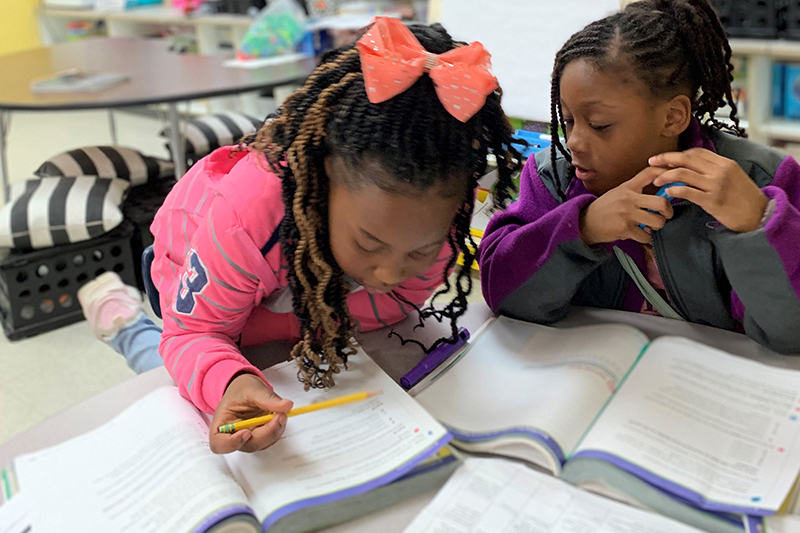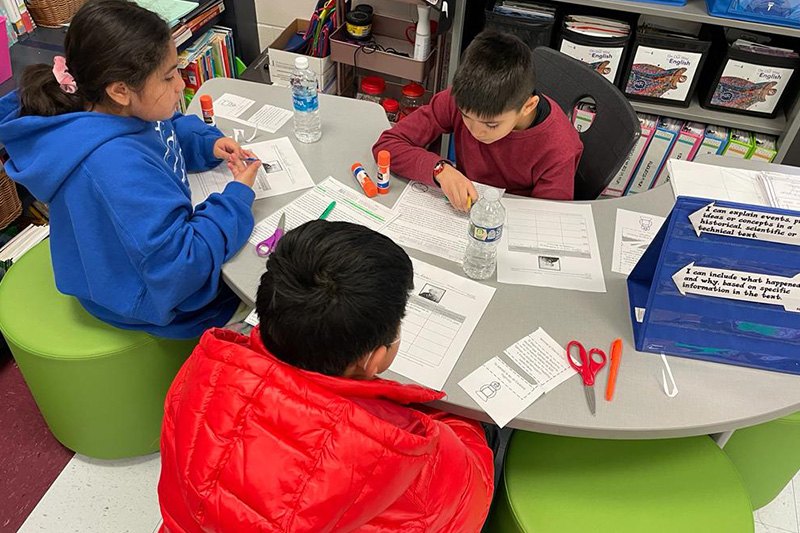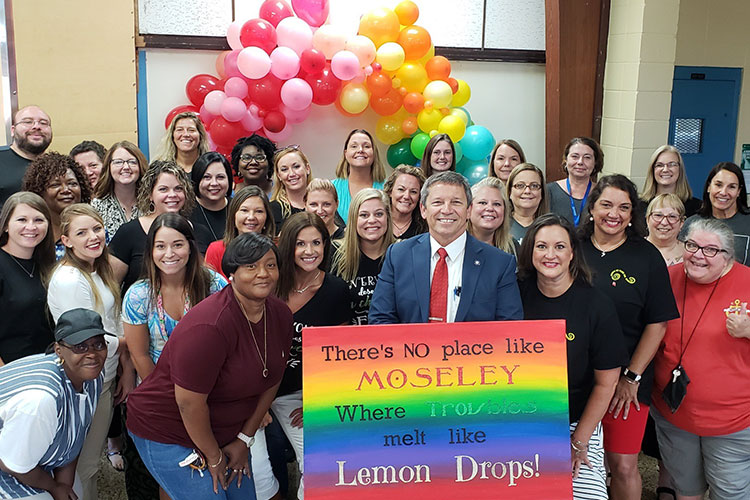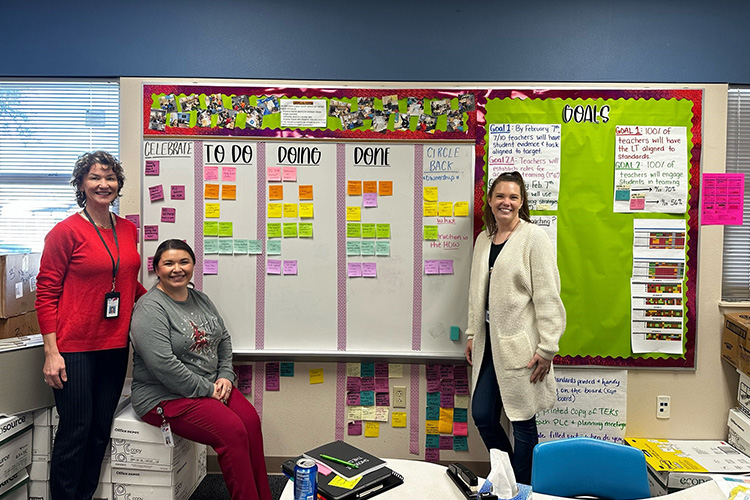The research-based Model of Instruction for Deeper Learning™ provides teachers and students with the skills for creating rich and rigorous classroom learning environments where ALL students thrive to higher levels of academic achievement.

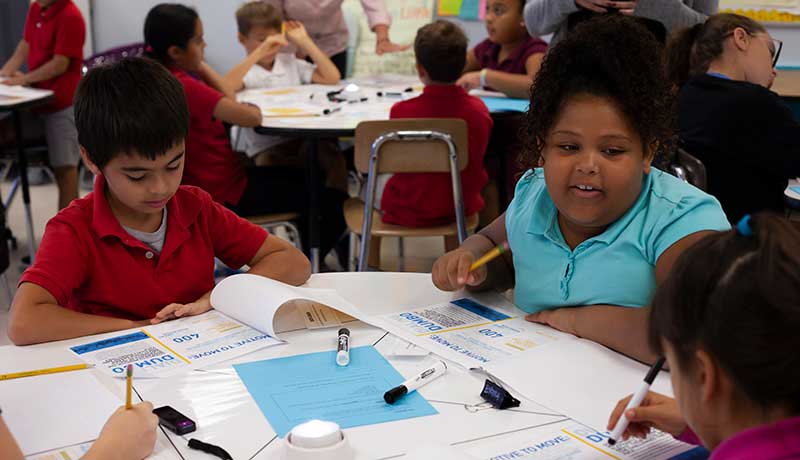
Impact and Results
Using rigorous federal research standards, multiple studies – including large scale studies – show the Model of Instruction for Deeper Learning has the following impacts when implemented effectively:
Raises academic achievement for ALL students in all reporting categories
Closes gaps for English Learners
Basileo, L.D. (2019). How a Great City School District Is Improving Performance and Closing Achievement Gaps for All Students: A 10,000-Student Study of Des Moines Public Schools.
Closes gaps for students with disabilities
Basileo, L.D. & Wolf, K. (2021). Lakewood Elementary: How This Florida School Substantially Outperformed Its District’s Learning Rates Through the Pandemic.
Closes gaps for Black and Hispanic students
Basileo, L.D. & Harris, K. (2021) How McLaughlin Middle School Exited Comprehensive Support Status, Received Its Best Results in 7 Years, and Outperformed Its District Learning Rates.
Closes gaps for students receiving free and reduced lunch
Basileo, L.D. & Wolf, K. (2021). Lakewood Elementary: How This Florida School Substantially Outperformed Its District’s Learning Rates Through the Pandemic.
Improves student behavior
Decreases behavior referrals
William D. Moseley Elementary School, Palatka, FL: Becoming a School Where All Students Thrive (2019).
Increases positive behavior recognitions
Walnut Middle School, Grand Island, NE: Transforming Student Behavior (2019).
Increases teacher retention
Decreases teacher turnover
Lakewood Elementary: How This Florida School Raised Student Academic Proficiency from the Lowest to One of the Highest in the State (2021).
Increases teacher satisfaction and decreases frustration
Basileo, L. (2024). Instructional Empowerment’s Applied Research Center (pending publication).
Improves student attendance and school culture
Reduces chronic absenteeism
Basileo, L. (2024). Instructional Empowerment’s Applied Research Center (pending publication).
Increases positive reports of school culture
Basileo, L. (2024). Instructional Empowerment’s Applied Research Center (pending publication).
How Does the Model of Instruction for Deeper Learning Get These Results?
The Model of Instruction for Deeper Learning accomplishes these results for ALL students by equipping teachers and students with a unique, research-based team learning structure that opens access to more rigorous content. Teachers also learn how to develop more rigorous, interdependent learning tasks incorporating existing curricular resources for the student-led learning teams.
Students, in turn, begin to thrive in their team-based structures where each team member becomes a trusted peer and problem solver allowing the team to successfully tackle much more rigorous learning tasks than the teacher may have been comfortable providing when the students were doing individualized or traditional group work.
The research-proven team-based learning structure enables and empowers students to be leaders of their own learning and to turn rigorous tasks from unproductive to productive struggle where the team members help lift each other, quickly developing into a powerful learning community of scholars.
The Model of Instruction for Deeper Learning:
- Equips students with the team-based structures for deeper learning through rich and vibrant academic discourse utilizing content vocabulary.
- Raises authentic engagement with rigorous interdependent tasks that require students to use the team-based structures and curricular resources to problem solve jointly as they develop and practice critical thinking and problem-solving skills.
- Opens access to the content for ALL team members as the team-based structures require equal voice and participation for each team member while critically thinking their way through rigorous tasks.
- Develops a sense of belonging and shared academic responsibility among the student teams.
- Develops students’ agency skills as they learn to self-regulate, peer regulate, and use the provided team-based learning roles, norms, and protocols for respectful debate, resolving team issues, and empathy development.
- Develops leadership as students develop the skills to lead their own learning and to encourage and support each other while engaged in productive struggle during rigorous tasks.
- Creates a student-owned learning culture within the team structure, empowering students to bring their unique background knowledge, voice, and culture within a vibrant team-based learning community.
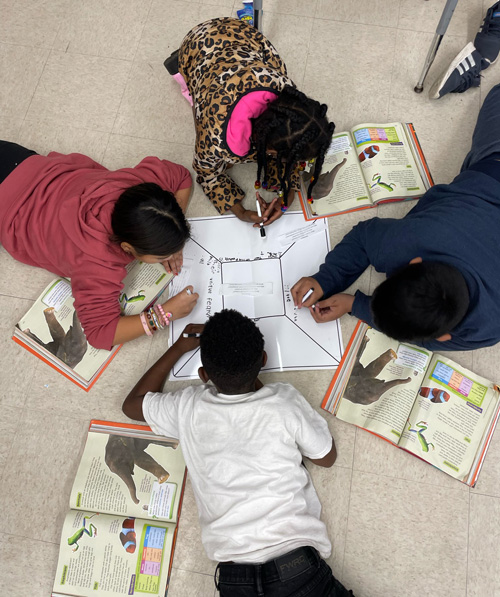
“The Model of Instruction for Deeper Learning has absolutely solidified and strengthened our district’s vision of providing classroom environments where the teacher isn’t doing all of the work.”
Dr. Patrick McGee
Superintendent, Woonsocket Education Department
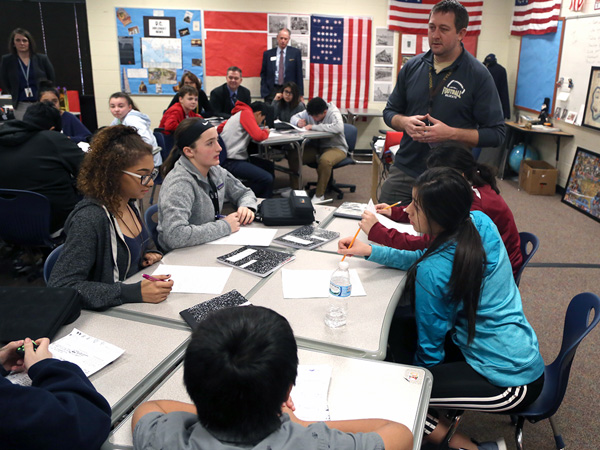
“They progress from ‘sage on the stage’ to the students taking responsibility. You can see how it’s changed the whole atmosphere of the school. It gives everyone a sense of pride. It has made us better, more effective teachers and leaders.”
Ronda Hamilton
Principal, Arthur Elementary School, Oklahoma City, OK
Pilot with Implementation Best Practices
We typically recommend that districtwide implementation begins with pilots of volunteer schools and volunteer teachers, building local expertise and momentum for the work as implementing classrooms transform into vibrant, deeper learning environments for all students.
Our unique coalition-of-the-willing approach to successful implementation empowers teacher and principal advocacy as they share the transformation in their schools and classrooms with the greater district community. During the pilot-to-scale stage, the district office develops the capacity to lead and sustain the implementation.
We approach every school district implementation as a valued and accountable partnership. We believe so deeply in the work that every district implementation is research-validated for results utilizing the district’s own assessment data.
“The reason why I have confidence in Instructional Empowerment is because there is grounded research in coaching. The impact they can have on a novice teacher up to a very seasoned teacher can be tracked and researched. They are very intentional about who they bring. They have a background with schools that serve students with lives like ours. I think that is very important to the work that they do.”
Brandon White
Former Assistant Superintendent of Academics, South Bend School Community Corporation, IN
“The coalition grows naturally from within as teachers see and hear about the successes of their peers.”
Kristin Andrews
Instructional Coach, Colerain High School, Cincinnati, OH
The Model of Instruction for Deeper Learning for ALL Students
There has always been deeper learning for some students in schools but not for all students in every classroom, every day. Now it is possible with the Model of Instruction for Deeper Learning that provides every teacher and all students with the professional learning, support, and resources for both teachers and their students to achieve deeper, more rigorous learning of the curriculum.
The Model of Instruction for Deeper Learning provides comprehensive resources, professional learning, expert coaching, and support for:
- Classroom teachers
- Professional learning community (PLC) leaders
- Instructional coaches
- School leaders
- District leaders
Educators at every level can align their work and support the implementation of deeper learning for ALL students.
Author and Instructional Empowerment Founder and CEO Michael D. Toth delivers a keynote at the national Building Expertise Educators’ Conference. He explains the neuroscience behind student-led team learning and how it allows ALL students to access deeper learning.
Overcoming Low Rigor, Low Engagement Tier 1 Instruction
Too often Tier 1 instruction is heavily teacher-directed resulting in a lower engagement and more passive learning environment where students are overly dependent upon the teacher. In this environment, teachers often withhold the rigor of the curriculum believing their students will struggle unproductively. This may result in over scaffolding and decreased rigor of learning tasks provided to students.
Teacher-directed, lower rigor, and lower engagement instruction often results in too many students being referred to Tier 2 and Tier 3 interventions creating the upside-down RTI/MTSS pyramid with larger numbers of students in Tier 2 and Tier 3 interventions due to less effective Tier 1 instruction.
Scripting lessons alone has not overcome this issue. Teachers need an instructional process that empowers all students of all ability levels to thrive with more rigorous learning tasks.
The Model of Instruction for Deeper Learning transitions the classroom learning process and environment from teacher-directed instruction to student-led team learning with rigorous interdependent tasks. The research-proven team-based learning structures empower all students of all ability levels to successfully engage in more rigorous learning tasks, dramatically increasing learning gains and academic proficiency levels.
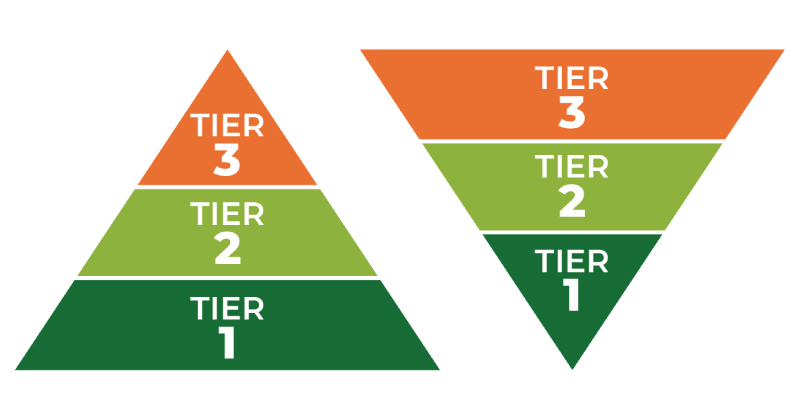
Low rigor instruction results in the upside-down RTI/MTSS pyramid.
Redesigned Tier 1 Instruction That Lifts ALL Students
The legacy “model of instruction” that most teachers have experienced can be classified as teacher-directed, whether it involves mostly lecture-based instruction with independent taskwork or incorporates teacher-facilitated grouping processes. Both of these are teacher-directed learning processes that require students to be dependent upon the teacher.
Redesigned Tier 1 Instruction through the Model of Instruction for Deeper Learning transforms the instructional process to student-led team learning that fully engages students in interdependent rigorous tasks using your adopted curricular resources.
By infusing a research-based teaming structure, all students are then empowered to successfully engage in rich content discourse utilizing the curricular resources. The Model is designed for more rigorous learning by providing roles, responsibilities, norms of conduct, and resources for students to turn unproductive struggle to productive struggle when completing more rigorous tasks.

Listen to a district’s experience of adopting the Model of Instruction for Deeper Learning. Video Credit: School District U-46, IL.
Opens Access to the Rigor of the Curriculum for ALL Students
The Model of Instruction for Deeper Learning opens access to the rigor of the curriculum for all students through the following:
- The professional learning and resources equip teachers to plan interdependent learning tasks at the intent and rigor of the standards that incorporate curricular resources. This puts curricular resources directly into the hands of students.
- The team-based learning structure enables all students to fully participate in the learning task with equal voice during content discourse utilizing content vocabulary.
- The unique protocols allow for students of different ability levels within the learning team to socialize their background knowledge helping to lift students that may have been academically or socially behind or were shy to participate prior to teaming.
- The roles, norms, and protocols empower students to have deeper and richer discourse around the content during the interdependent tasks as they develop independent critical thinking, problem-solving, and leadership skills.
- Students develop higher agency skills as the protocols and norms help them better self-regulate and peer regulate to stay on track during more rigorous learning tasks.
- Students are able to engage in and sustain productive struggle during more rigorous learning tasks as the norms and protocols create a learning culture of peer encouragement and support to help all students turn unproductive into productive struggle.
- Students are empowered with more voice and choice while critically thinking their way through the learning task, creating authentic engagement. As students are leading their own learning during teaming with more rigorous interdependent tasks, teachers are able to transition to a coach of the learning with freed time to visually and auditorily monitor for deeper learning and ensure all students are fully benefiting.
- Students continue to develop academically and with greater agency as they successfully take on more challenging learning tasks. This creates a virtuous cycle of a continuously improving learning environment that develops all students’ efficacy.
Explore Services
Schedule a Consultation with Subject Matter Experts Today
Meet with our expert career educators (not salespeople) who will explain the Model of Instruction for Deeper Learning in detail and share best practices for implementation, with no obligation.

